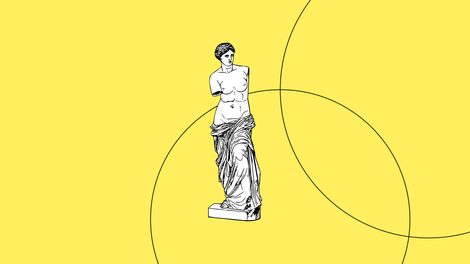
Since the dawn of time, nature, humans – and everything in between – have been designing. Even life itself has its own design (energy, oxygen, and water).
If you look a little closer at the details, you’ll see the design (and architectural design) in just about everything.
If you look at your feet at an ant’s nest, for example, you’ll notice its tower-like appearance at surface level. But beneath the surface lies intricate tunnels and underground chambers that can host up to seven million of these Formicidae.
They create such fortresses using a design that boasts space optimization, social organization, and functional working systems.
As you can see, the small but mighty ants understand that the purpose of design (and in particular, architectural design and graphic design) is closely linked to strategy, functionality, and aesthetics.
It’s the process of intentionally creating something while simultaneously considering its purpose and function.
But to truly get the anchor point of graphic design – and how it’s been cropped through the ages – an excellent place to start is by understanding its pixelated history.
- The Painted Roots Of Graphic Design
- The Writing’s On The Wall
- Introducing Signage
- The Birth Of Graphic Design
- Evolution Of Graphic Design Up Until The 1900s
- Evolution Of Graphic Design After The 1900s
- Graphic Design In This Day And Age
- The Future Of Graphic Design
Jumpstart your ideas with Linearity Curve
Take your designs to the next level.
The painted roots of graphic design
Graphic design is a field that is widely known by people around the world. The term itself first appeared in print in the 1922 essay: “New Kind Of Printing Calls For New Design,” written by a typographer, William Addison Dwiggins.
Later on, “Raffe’s Graphic Design,” published in 1927, was the first book title that included the words ‘graphic design’ on a cover.
Although Leon Friend’s 1936 book in the 20th century, “Graphic Design,” is believed to be the earliest form of a comprehensive description of the field, today, there are millions of publishings that focus on both its history and its riveting subject as a whole.
To truly grasp graphical composition, we should dig into its historical discoveries, starting from the first cave paintings. So, sit back and relax while we rewind to where it all began.
Where should you look to find the origins of graphic design? You’ve probably heard of the Lascaux caves in Southern France, Rome’s Trajan’s Column, or the illuminated manuscripts of the Middle Ages.
Fast forward just a couple of thousand years later, you’ll discover the Blau Monument (3100 – 2700 BC), a pair of inscribed stone objects from Mesopotamia, which is now located in the British Museum. It’s the first known artistic composition artifact to use both words and pictures on it.
The history of graphic design didn’t start with computers and technology. The birth of visual composition and design is strongly interlinked with early human existence and culture.
The traces of the earliest form of undisputed artistic composition originated with the Homo sapiens’ Aurignacian archaeological culture in the Upper Paleolithic.
Thus, it could be said that the preference for aesthetics probably already emerged in the Middle Paleolithic, which was about 100,000 to 50,000 years ago.
Cave paintings
Since graphic design is the art of creating graphics on a surface, it can literally be done on a metal surface, canvas, paper, computer screens, stones, and pottery.
Graphic design was even displayed on cave walls (did you know that the other name for cave paintings is ‘parietal art?’) and ceilings, and they date back to around 38,000 BCE in Eurasia.
Around 35,000 years ago, the first cave painting, ‘Pettakere,’ was made in Sulawesi, Indonesia. However, their exact purpose is still not yet entirely known by scientists. Ancient people decorated walls with paint made from dirt or charcoal mixed with spit or animal fat.
What’s important is that at that time, people couldn’t write. So, apart from being just a simple decoration, their designs could have probably served as a means for communication.
Some theories claim that in ancient times, they had a religious or ceremonial purpose to them as well. Interestingly, the most common themes in European cave paintings are large wild animals, such as bison, horses, aurochs, deer, and tracings of human hands (most likely artists’ signatures).
The writing’s on the wall
At one point, writings started to appear, and one of the earliest known written languages is Sumerian. The so-called proto-literate period of Sumerian writing spans roughly 3300 to 3000 BC. In this era, records were purely logographic (icons used to represent words, and they all had phonological content).
It was underlined by researchers that this logographic way of constructing a language suggested the natural ability of humans to use visual representations to communicate complex ideas. This natural method refers directly to modern design.
Archaic Sumerian was the earliest stage of inscriptions with linguistic content, beginning with the Jemdet Nasr (Uruk III) era from about 3000 to 3100 BC. The oldest document of the proto-literate period was the Kish tablet.
Paper and printing era
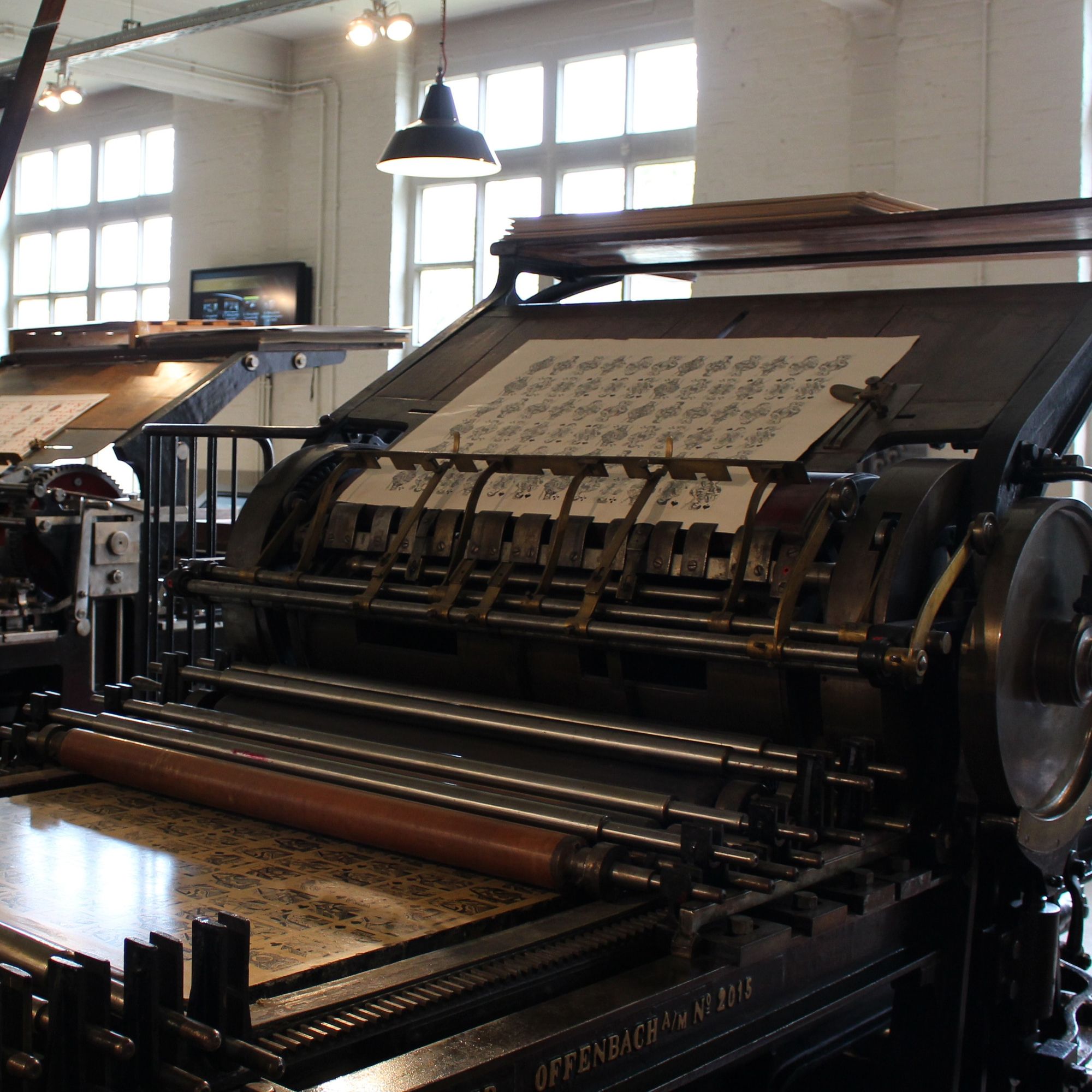
Before mainstream American graphic design was used for commercial and creative purposes, such as magazines, logo designs, book design covers, and outdoor advertisements, it first had to be introduced to good old paper and print.
The invention of paper in 105 AD by a Chinese man led to the concept of printing. Around a thousand years later, in 1045 AD, the first moveable type was invented. In 1276, a paper mill arrived in Fabriano, Italy, and this era was known for officially creating the first paper mill in Europe.
Dive into the World of Color Theory
Explore our curated selection of color theory books. Enhance your understanding of color's impact in art and design to enrich your creative projects.
However, only in 1450 was the system for printing books and other forms of literature in place. In 1460, the first illustrations in a printed book design followed (and you know how a picture is worth a thousand words!).
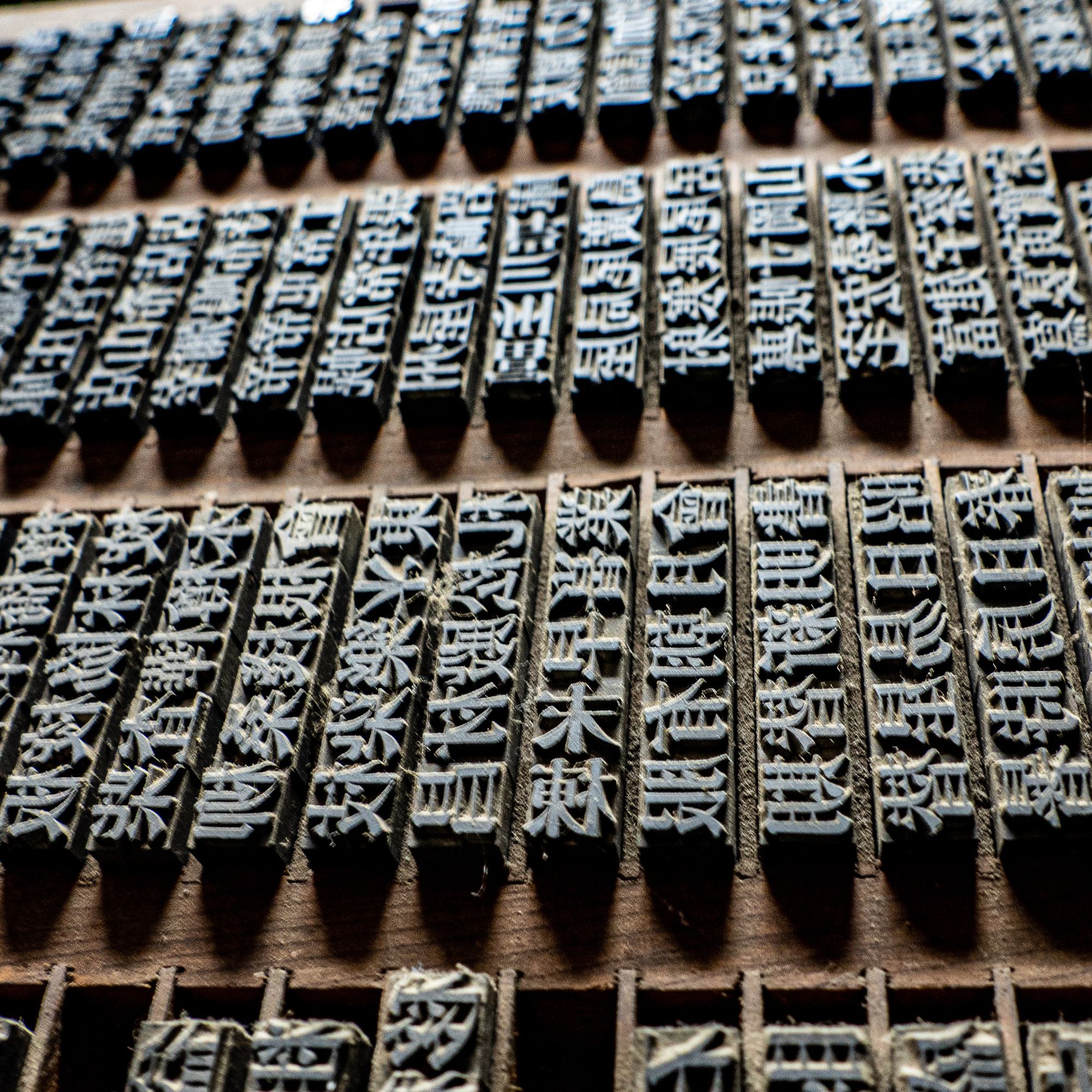
Some Chinese printing discoveries included non-papyrus paper making, woodblock printing, and movable type. Since 200 CE, they were already using wood reliefs to print and stamp designs on silk clothes and later on paper.
It was only in the 11th century in 1040 that Bi Sheng invented the world’s first movable type printing press out of porcelain.
During the Tang Dynasty (618 – 907), wood blocks were initially cut to print on textiles. However, they were later used to reproduce Buddhist texts. The Buddhist scripture printed in 868 was the earliest known printed book structure.
In the 11th century (960 – 1279), longer scrolls and books were produced, making them widely available to the masses.
Medieval calligraphy
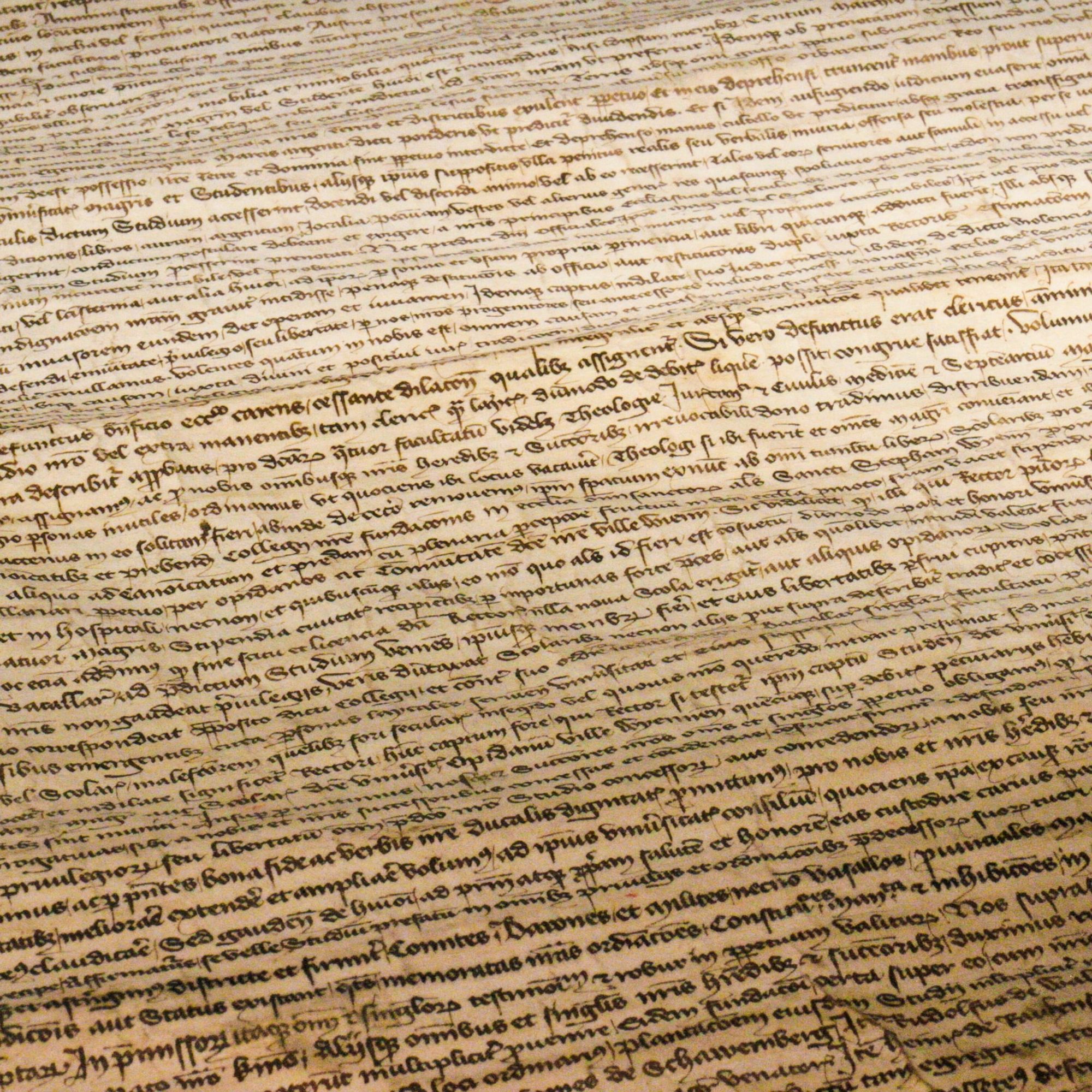
As human development progressed, typography became more important since aesthetic interest was being broadened and the mind was increasingly obtaining more information.
This period dates all the way back to the Middle Ages. Texts in this era were still produced and replicated by hand, and the artistry in producing small portions of books made these items and their creators stand out in the crowd.
In Islamic cultures, for example, figurative art was largely frowned upon. Therefore, typography was among the few acceptable ways of artistic expression at the time.
Introducing signage
Heraldry is a system by which coats of arms are devised, described, and regulated. In all likelihood, the first logo was the coat of arms, which became a symbol used to represent family houses or territories.
During the Crusades, soldiers from different countries had their coats of arms displayed on their armor and battle flags to distinguish themselves apart. As coats of arms represent specific values, they can be accurately compared to the modern use of a logo for brands.
Storefront signage
Storefront signage has a long history that dates back to ancient civilizations. For example, in ancient Rome and Greece, shopkeepers would hang painted signs outside their establishments to advertise their goods and services. In medieval Europe, guilds of tradespeople would display their guild symbols on signs outside their shops.
During the Industrial Revolution, the growth of cities and the rise of a consumer culture led to an increase in storefront signage. Businesses began using signs to attract customers and stand out from their competitors. In the 19th century, new technologies such as lithography and neon lighting allowed for the mass production and illumination of signs, which made them even more effective at attracting attention.
In the 20th century, advancements in materials and technology have continued to shape the development of storefront signage. Today, signs can be made from various materials, including plastic, metal, and LED lights, and can be designed to be illuminated, animated, or even interactive.
In addition, Signage has also been an integral part of the advertising industry and urban design. Signage reflects cultural and economic trends and has become an essential aspect of brand identity and community character.
The birth of graphic design

People’s lives were primarily focused on agriculture for hundreds of years. People farmed small pieces of land for the livelihood of their own families, producing DIY tools, furniture, and clothing for their use or local neighborhood trade.
When the Industrial Revolution began in Great Britain around 1760, it spread to other parts of the world like wildfire. But what did this mean for the field of graphic design?
As a major turning point in the history of mankind, it touched almost every aspect of daily life. The general industrial design mechanization acted as a strong accelerator of processes.
When it came to printing speed in the 19th century in 1810, industrial design innovation allowed 400 pages to be printed per hour, compared to other mechanisms used in the history of posters.
Mass production brought the need for mass communication. Thus, the nature of visual design information changed significantly during this era.
Graphic communications became more important, photography was invented, and the upgrade of printers, advertisements, and the overall advancement of the history of posters also took place.
Evolution of graphic design up until the 1900s
Johannes Gutenberg’s printing press enabled people to create designs from text, art, and minimalist design on a massive scale. From this, companies started to learn how to grow in terms of their visual design identity and how to sell with the use of it.
Invention of the gutenberg press
What changed thanks to Gutenberg’s invention was people’s attitude towards printed books and the press (including the influence of Kelmscott Press, William Caxton, and Yale University Press).
Some other notable press companies influenced by Gutenberg were:
- University of California Press
- Harvard Business School Press
- Icfai University Press
- Lutterworth Press
- Peachpit Press
- Massachusetts Institute of Technology Press
Moreover, with accessibility came all sorts of profits starting with easier mass communication and affordable knowledge and information. The year 1439 also changed civilization and shaped Western culture.
European and American graphic design ultimately gained a supporter, with the Gutenberg press paving the way for general commercial use.
First logos
We’ve already mentioned that the roots of logos lie in the history of posters, but before the press arrived, it had been a whole different story.
The first logos were limited to marks on companies’ documents. Used in conjunction with visually representing a company, a logo was also meant to present the brand’s advancement (a good example is the Google logo design) in its printing technique.
Become a Logo Design Pro
Master the art of logo design with our comprehensive course. Perfect for all skill levels, learn to create memorable and effective logos for any brand.
In short, how well the logo was printed reflected how well everything else was printed and executed by them.
First print advertisements
The first printed advertisements had an amateurish and goofy style. They appeared suddenly on a flat surface in massively printed newspapers. And in that era, they were called ‘coranto.’ The ad invasion happened in Europe in the early 1600s, but written advertisements initially date back to ancient times in Egypt.
So, what was all the fuss about? The thing is, this became the first time people could actually see images in mass-produced ads, minimizing previous design issues.
Chromolithography
The further the technological progress reached, the more the world of graphic, minimalist design could develop and spread its wings. Look at the seemingly simple ability to print in color or at chromolithography.
Furthermore, chromolithography enabled a higher degree of realism and attractiveness added to simple objects of life and fashion. Until then, graphic, minimalist design was solely based on shapes and marks. That’s why the messages in design were first solely clear and informative.
Later on, graphic design started to approach creations based on emotional attitudes and preferences.
Some designers who were praised for being ahead of their time with a higher than average understanding of emotional intelligence in their creations include:
- William Morris – William Morris was a British textile designer, poet, artist, novelist, architectural conservationist, printer, translator, and socialist activist associated with the British Arts and Crafts Movement
- Bruce Kennett – Bruce Kennett was a designer of illustrated books and museum exhibits, photographer, author, and designer of “W. A. Dwiggins: A Life In Design”
- Cipe Pineles – Cipe Pineles was an Austrian-born graphic designer and art director who made her career in New York at magazines like Seventeen, Charm, Glamour, House & Garden, Vanity Fair, and Vogue
- Frederick H. Meyer – Frederick H. Meyer was an American architect best known for designing the YMCA Hotel in San Francisco.
Evolution of graphic design after the 1900s
In 1993, Paul Rand (the designer responsible for the logos for Ford, Westinghouse, Yale, ABC, UPS, and IBM) successfully distinguished the core of graphic design: “To design is much more than simply to assemble, to order, or even to edit: it is to add value and meaning, to illuminate, to simplify, to clarify, to modify, to dignify, to dramatize, to persuade, and perhaps even to amuse. To design is to transform prose into poetry.”
Today’s form of American graphic design, in particular, has been in the making since the late 1800s. In 1903, the first minimalist design agency, The Wiener Werkstätte, was established. The benefit of graphic design became evident and widely recognized since then, which helped kick off an entirely new industry.
The Wiener Werkstätte was the first organization of visual artists, which included architects, painters, and early graphic designers. They boldly reached out to cubism and other stylistic innovations – and their symbolic accomplishments set the stage for the Bauhaus and Art Deco styles.
Staatliches Bauhaus was founded in 1919 during the 20th century in Weimar, Germany. Another difficult German word linked to it, the ‘Gesamtkunstwerk,’ was an artistic composition ideal that encompassed combining existing art forms into one perfect work.
The goal that was actually brought into life – Bauhaus – became one of the central driving forces behind the popularization of the modernist style.
In 1922, William Addison Dwiggins explained what graphic design was in his book. Moreover, “Thoughts on Design” by Paul Rand was published in 1947. And in his book, he focused on 'functional-aesthetic perfection,' an ideal balance between a logo looking good and communicating its points effectively.
Graphic design in this day and age

Instead of mass printing, humans are enjoying continuous technological advancements, with the computer, internet, and social networks being colossal turning points in how European and American graphic design is today.
Online platforms created many professions and opportunities for graphic designers. Meanwhile, digital software became more and more polished, cheaper, and more accessible than ever before – like the easy-to-use one we have at Vectornator.
In 1990, the first version of Adobe Photoshop was released, creating a revolution in how graphic designers worked with graphical composition. Photo manipulation created a whole new subcategory of graphic design.
Before this, only artistic collages provided the possibility to blend photography, illustration, and CGI elements. Now, practically everything can be done.
So, what are the forecasts for the future then?
The future of graphic design

Even with a shiny crystal ball, no one can know for sure what the future holds for graphic design. But it doesn’t hurt to make some educated predictions.
To quote Vladimir Gendelman, Founder and CEO of Company Folders, Inc: “The future of graphic design and architectural design is going to be elevated to new heights by being fused with augmented reality and eventually, 3D printing and 3-D geometric composition.”
Augmented reality
Augmented reality (AR) can be used in graphic design to create interactive and immersive user experiences. With AR, you can create virtual showrooms where users can see how furniture or other products would look in their homes. AR can also create interactive posters, brochures, and other marketing materials that provide additional information or experiences when viewed through an AR-enabled device. Graphic designers can use AR to create 3D models, animations, and other interactive elements that can be integrated into real-world environments. AR can also be used in product design and prototyping, allowing designers to visualize and test their designs in a real-world setting before committing to manufacturing. In short, AR expands the possibilities for graphic design. It allows for greater engagement and interaction with the design and its surroundings.
Material design
Material design is a design language developed by Google. It supports on-screen touch experiences through natural motions and cue-rich features to mimic real-world items. Graphic designers can optimize the users’ experience through 3D effects, 3-D geometric composition, animation features, and lighting features in an immersive graphic user interface.
The death of paper
In about ten years, graphic design will likely become more immersive as the paper itself will become obsolete. In other words, almost all designs will be digital, absorbing users deeper into the design experience.
Vintage will dominate logos
Vintage logo designs, which ruled the media in the 1960s, are likely to make a comeback. The idea is to go back and acquire a blend of hip, medieval designs like regal seals, family coats of arms, and ornament scrolls.
Responsive thinking
Today, responsive web design is among the top priorities in any designer’s quest for job excellence. Undoubtedly, the future promises to take the ‘responsive’ game to the next level, creating designs that not only fulfill the purpose of fitting screen sizes and shapes but also cater to the viewer’s mood and emotions.
What do some of the other experts in our field have to say about the future?
- Adam Kleinberg, CEO and Co-founder of Traction: “Graphic design and graphical composition are on a collision course with experience design and 3-D geometric composition to help minimize the design issues from ‘the history of posters era.’ Print is already close to dead as a medium of expression, but design has never been more important. In the future, all designers will need to think about the context of how their work is experienced by users. It’s the third dimension – a different breed of design project.”
- Pj Richardson, Creative Director and Co-owner of Laundry: “In 10-15 years, the separation between technologically-driven design and graphic nostalgia will broaden. Books, comic books, posters, and signage will still exist with unusual new twists (think signage systems on Mars).”
- Miguel Lee, Partner and Creative Director of Midnight Sherpa: “Technology and graphical composition will play a bigger role than ever in the way that we communicate through design and official posters. We are living through a time where the paradigm shifts so often in the way we approach content creation that the overall effect is now the new norm.”
- Jake Smith, Founder of Productviz: “Graphic design and architectural design will continue its dependence on technology to create interesting and compelling narratives and concepts. In the future, as the quality of 3D, inspiration from Paul Rand works, American poster design, 3-D geometric composition, augmented reality, and virtual reality continues to progress, design communities will have more expressive ways of sharing their vision.”
We’d love to hear from you what your predictions, guesses, and sixth sense feelings are about the future of graphic design! Don't be shy – get social with us.
In conclusion
The journey in the development of graphic design, graphical composition, and the progression of visual communication is exciting because it shows that this field has no end. It has continuously refined itself and changed paths, but the core idea of communication with the use of visual symbolism remains the same.
Jumpstart your ideas with Linearity Curve
Take your designs to the next level.
So, as long as you’re using the right digital tools – like Vectornator – your designs will stand the test of time today, tomorrow, and in the generation of flying cars and jetpacks.
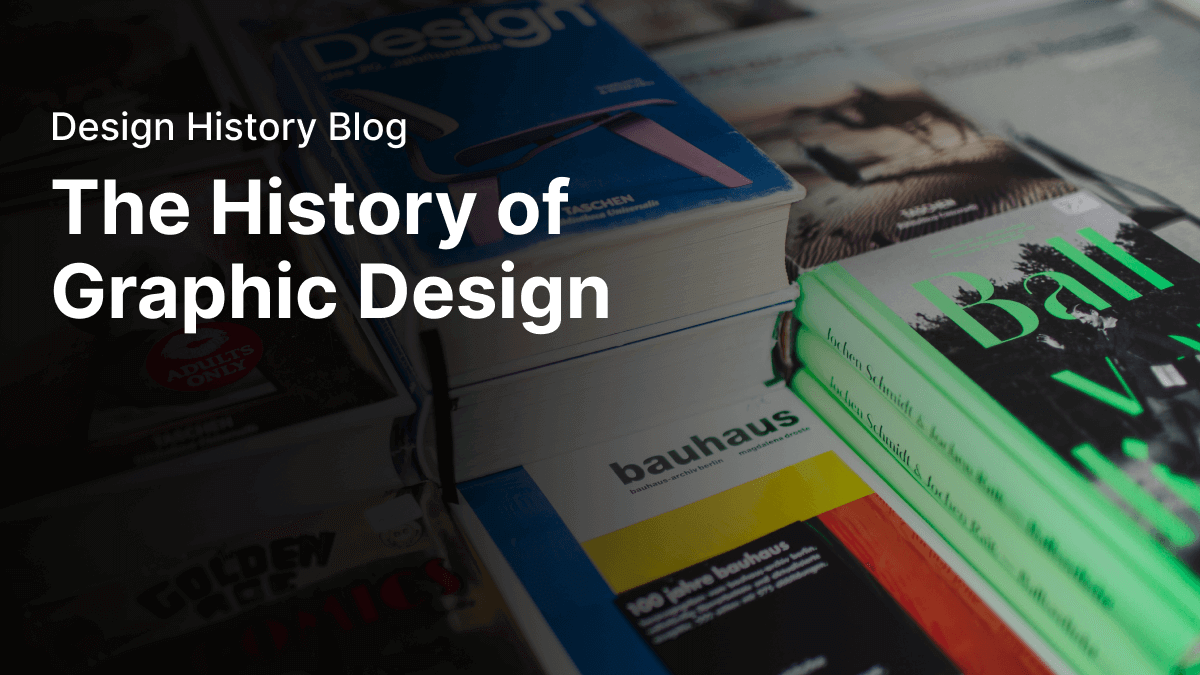
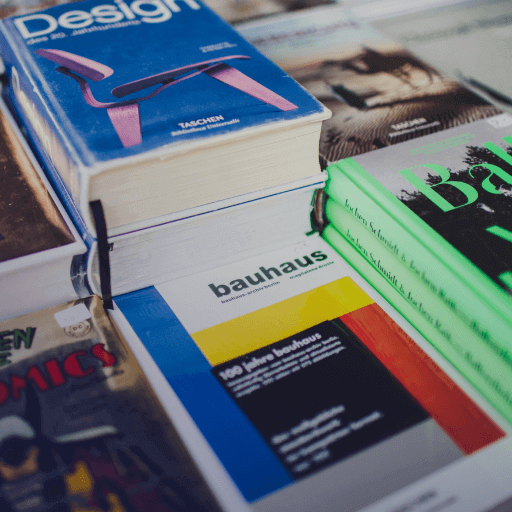
Share this!
Samantha Spiro
Samantha is a contributing writer to the Linearity Blog.


:quality(75))
:quality(75))



:quality(75))
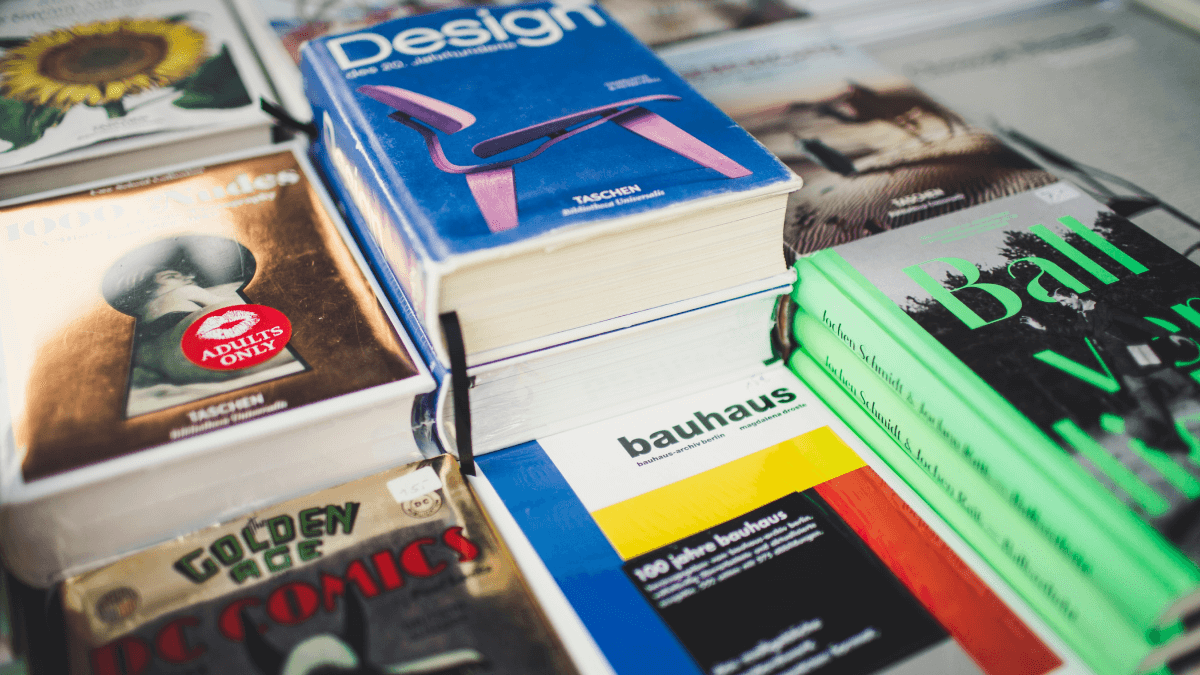
:quality(75))
:quality(75))
